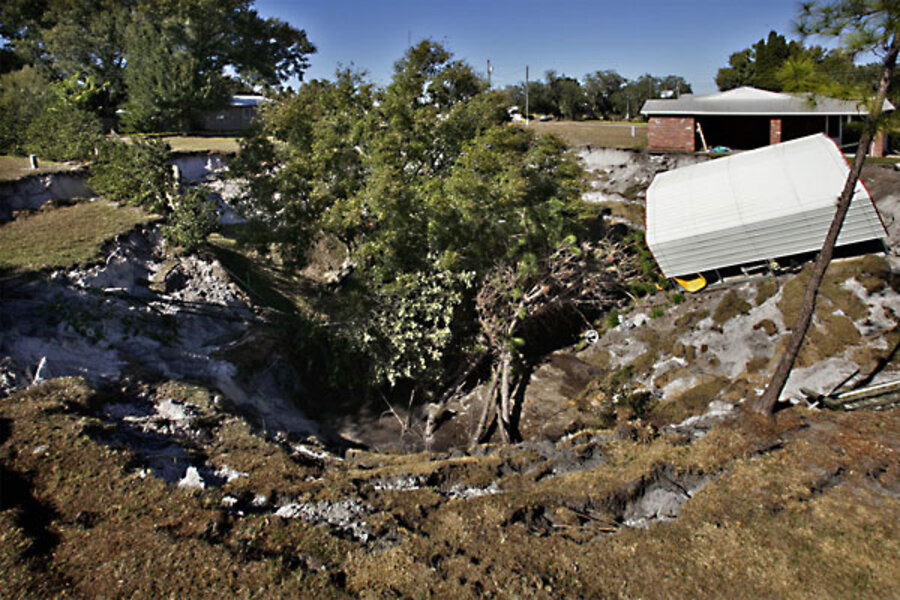Why are there so many sinkholes in Florida?
Loading...
Florida is known as the Sunshine State, but living there has a dark side, as the family of Jeff Bush discovered when the 36-year-old man was killed after a sinkhole opened beneath his house last week.
Authorities are now reporting the development of a second sinkhole in Seffner, Fla., just 2 miles (3 kilometers) from the sinkhole that destroyed the Bush home, according to NBC News.
Sinkholes are an increasingly deadly risk in Florida, due primarily to the region's geology. The state is largely underlain by porous limestone, which can hold immense amounts of water in underground aquifers. As groundwater slowly flows through the limestone, it forms a landscape called karst, known for features like caves, springs and sinkholes.
The water in aquifers also exerts pressure on the limestone and helps to stabilize the overlying surface layer, usually clay, silt and sand in Florida. Sinkholes form when that layer of surface material caves in.
The collapse can be triggered by a heavy overload, often caused by a downpour or flooding, or when water gets pumped out of the ground. When water leaves the cavities within the limestone, the pressure that supported the surface material also goes. Depending on various factors, that overlying layer can give way abruptly, as it recently did in Florida, or gradually, said Ann Tihansky, a hydrologist with the U.S. Geological Survey (USGS) in Florida. [See Amazing Photos of Sinkholes]
And Florida's groundwater has been disappearing rapidly as the state's population grows at breakneck speed: By 2015, Florida is expected to hit 20 million residents, making it the third-largest U.S. state, according to BusinessWeek.
To slake a thirsty state's population, Florida has been aggressively pumping out groundwater, destabilizing its limestone bedrock and contributing to the growing number of sinkholes, according to a USGS report.
Nowhere is this more true than in "Sinkhole Alley," the rapidly growing region of west-central Florida surrounding Tampa Bay, CNN.com reports. Sinkholes can also occur naturally, but from 2006 to 2010, the number of sinkhole claims to Florida insurance companies tripled, according to BusinessWeek.
Sinkholes are even more common in Florida during the winter months. "There's a high occurrence specifically in January or February," Tihansky told LiveScience. "And that's related to freezes, when farmers pump groundwater onto crops, strawberries and oranges, to protect them from freezing."
The other peak in sinkholes in Florida occurs in May and June, which are typically dry months with the year's lowest groundwater levels, Tihansky said.
These factors, combined with unstable rainfall patterns — the Tampa Bay region has had less than one-third its usual rainfall this year, according to the Minneapolis Star-Tribune — make sinkholes an ever-increasing threat to Floridians.
LiveScience's Jeanna Bryner contributed reporting to this article.
Email Marc Lallanilla or follow him @MarcLallanilla. Follow LiveScience on Twitter @livescience, , Facebook orGoogle+. Original article on LiveScience.com.
- 50 Interesting Facts About The Earth
- Look Out Below! 8 Amazing Sinkholes
- Image Gallery: One-of-a-Kind Places on Earth
Copyright 2013 LiveScience, a TechMediaNetwork company. All rights reserved. This material may not be published, broadcast, rewritten or redistributed.





